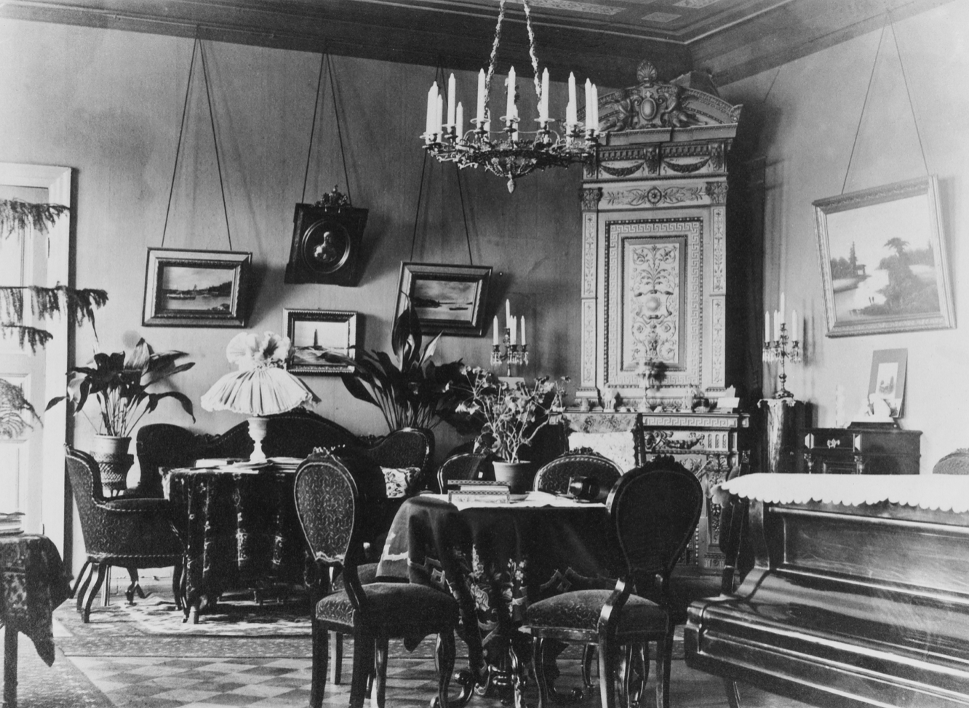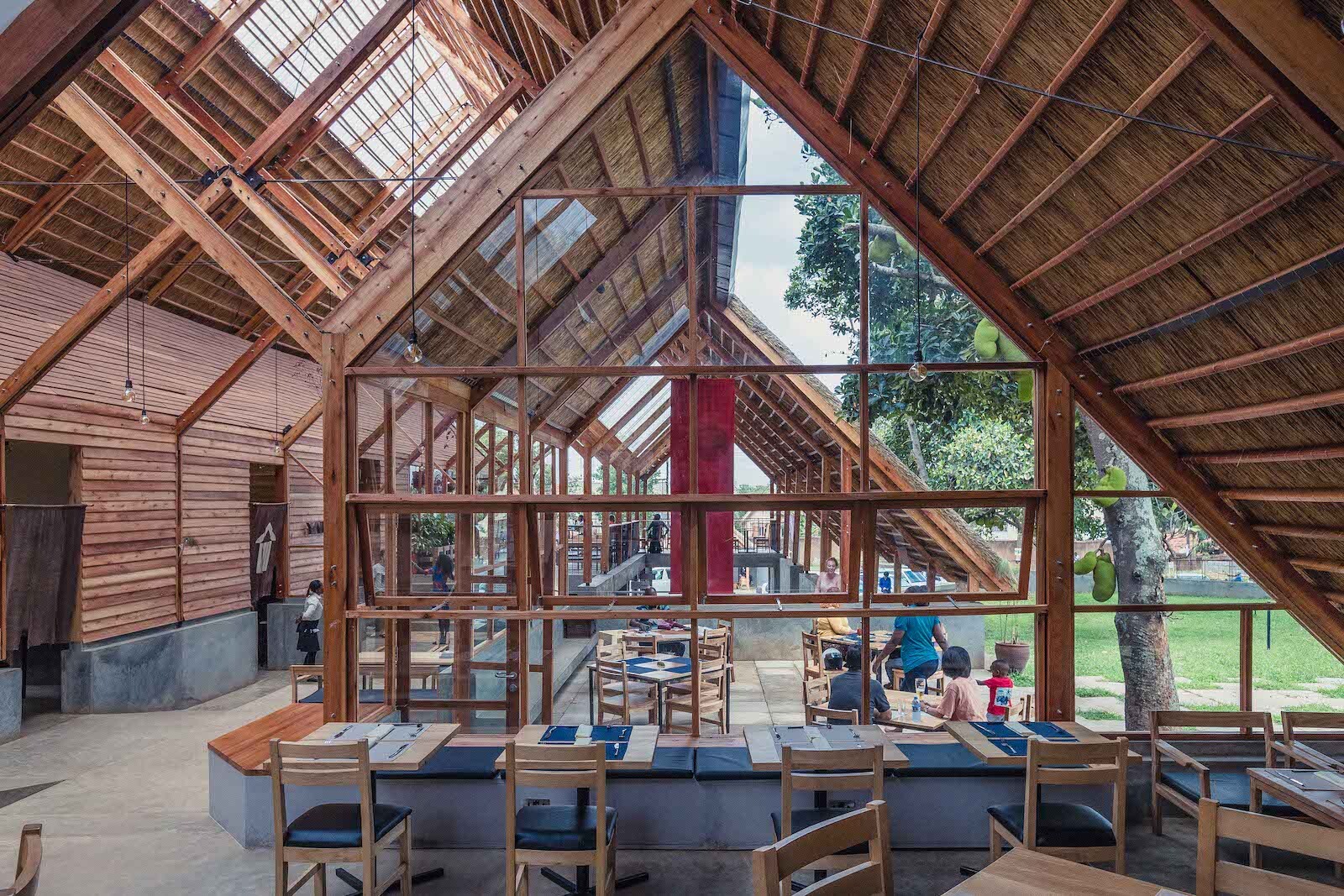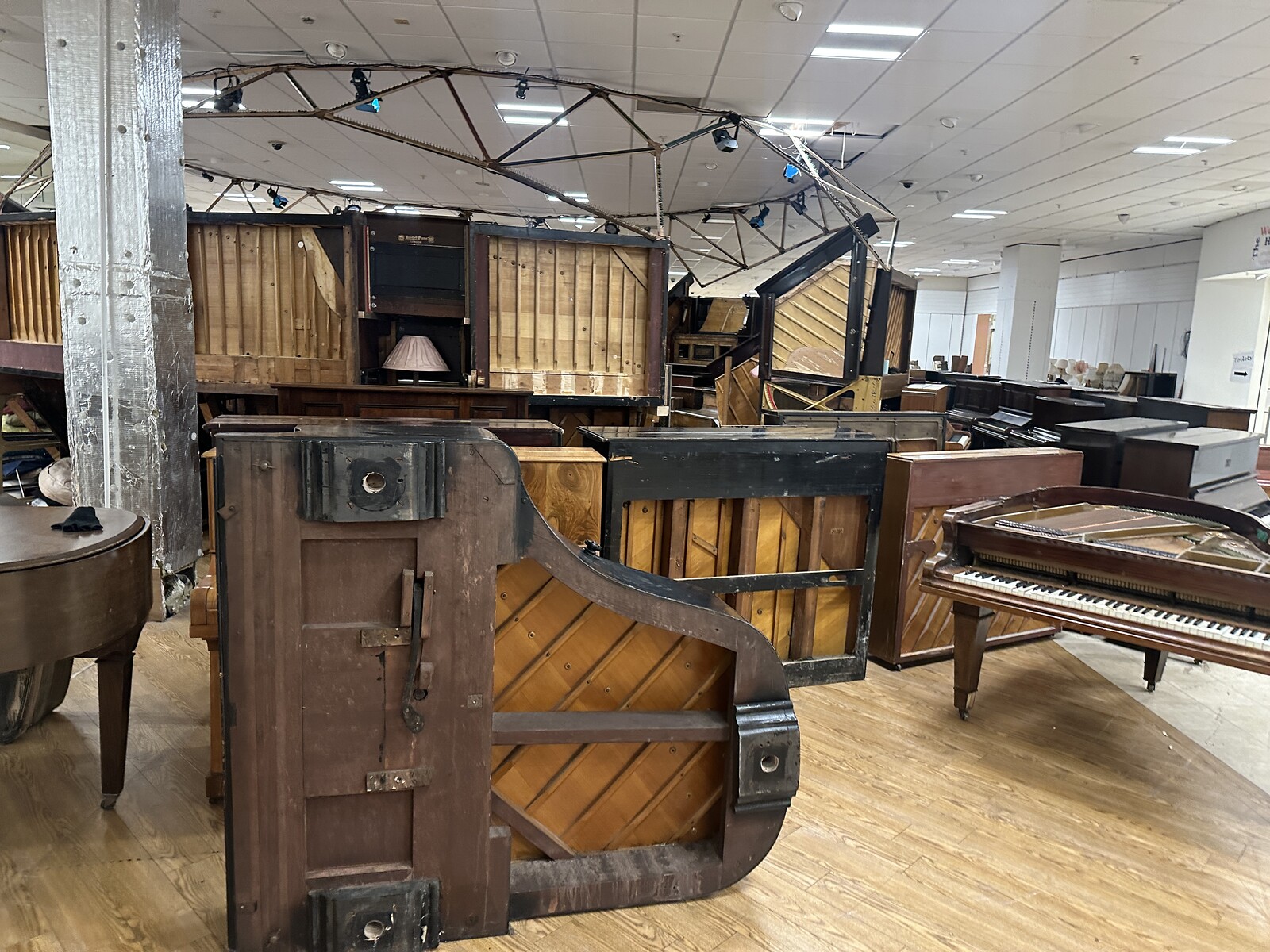The capacity to wield power over atmospheric conditions is central to the idea of modern civilized society. Being subject to the elements is considered old fashioned, annoying, and generally beneath us—except, of course, when we decide to manufacture transcendent experiences by conquering mountains or plunging into freezing lakes. The illusion that we can exert absolute control over our environments has led to the creation of dwelling spaces designed to be free from unwelcome interruption and fluctuation. Chris Otter suggests that “human living-space has become a giant apparatus within which encapsulated beings are fed, watered, mobilized, entertained, and maintained in states of historically-unprecedented bodily comfort.”[foonote Chris Otter, “Encapsulation: Inner Worlds and Their Discontents,” Journal of Literature and Science 10, no. 2 (December 2018): 55–66.] A central part of this comfortable encapsulation involves the fantasy of liberation from intrusion—intrusion from offensive sounds, smells, germs, light … and other humans. Elizabeth Shove proposes that this great move into increasingly controlled indoor atmospheres has been accompanied by the standardization and ratcheting up of standards governing collective notions of comfort, cleanliness, and convenience across much of the developed world. The pursuit of these values has not only driven the wealthy, urbanized world’s energy demand since the mid-twentieth century, but shaped the structures we inhabit. Our gradual cocooning within indoor environments in urbanized regions of the globe has perpetuated the myth that we can live in discreet, unimpeachable bubbles, regardless of the ecologies in which they are erected.1 The modernist optimism that saw the advent of air-conditioning, mass produced materials, standardized buildings, and global distribution networks is predicated on the illusion that we have transcended our ecologies. However, as we have continued on this trajectory, our bubbles have come to seem increasingly porous.
Disdain for local ecological conditions at the micro-scale has allowed a slew of unfriendly microscopic agents to enter our most intimate living environments undetected. Modern buildings are suffused with substances that are intended to enhance comfort and control, yet are transforming human bodies in ways that will persist for generations. The explosion of chemical innovations in the early twentieth century saw countless chemical toxicants enter the built environment. Many came through air or water contamination, but many others were central to the conception and design of common products of convenience, such as modern cookware, textiles, cleaning products, electronics, and building and interior materials. This functional dependence presents a particular challenge today, as the performance of numerous everyday objects and materials depends on chemical toxicants for which there are no known safe substitutions. Other products have then been designed around these products, meaning that entire networks of objects and practices depend on chemical toxicants. There are also a range of hazardous substances used in the construction and furnishing of buildings that are entirely unnecessary. Plush carpets, walls, furniture, and many other interior objects are glossed with chemicals like water resistant, fire-retardant PFAS, which are linked to certain cancers, kidney dysfunction, birth defects, thyroid disease, and autoimmune disorders, among other serious health issues.2
The quest for comfort qua sterility has also created extraordinary new selective pressures for microorganisms within the built environment. The thermal conditions of modern indoor spaces have seen the growth of microbial communities unlike anywhere else on Earth. Extremophile species only found in volcanic geysers and the Arctic have been found living alongside one another in heaters and refrigerators. Indoor ecologies are still largely uncharted, but we do know that in an enclosed environment containing antimicrobial substances, microorganisms with defensive properties will share their genes with others, equipping an increasing number of microbial communities with antimicrobial resistance. The antimicrobial load from cleaning products and building materials is also amplified by the spatial characteristics of buildings—particularly those with enclosed rooms and limited airflow. Without the environmental flux that shifts biological material in outdoor ecologies, the indoor environment enables toxicants like antimicrobials to persist and accumulate.
Imperceptible substances
Despite great advances in material specification, awareness of material provenance, and models for product stewardship, little progress has been made in tracing and eliminating substances of concern from the built environment. This is because they have not been considered relevant until very recently, or, in Michelle Murphy’s words, they have been “rendered imperceptible” by a culture oriented towards accelerated production and innovation.3 The imperceptibility of toxicants is not only a problem for business-as-usual construction and development, but also for those attempting to bring about a new, more sustainable regime of building and dwelling driven by goals such as net zero and material circularity.
Reducing the material and energy intensity of buildings will be essential for an ecologically sustainable future. Globally, the building industry is estimated to consume around 50% of mineral resources, to produce about 35% of waste,4 and to contribute around 39% of global CO2 emissions.5 The linear “take-make-dispose” model of construction cannot continue. The use of recycled building materials could lead to an overall decrease in environmental impacts, with one study finding an overall decrease in impact of up to 65% in the construction and end-of-life phases of a building’s existence.6 However, solutions that involve recycling or downcycling in the built environment often leach residual toxicants into that environment, altering the material ecology of buildings, their occupants, and the ecosystems they are connected to.7
Downcycling plastic waste into construction material such as bitumen for roads or plastic bricks for buildings is becoming increasing popular, particularly in contexts where plastic waste and housing shortages are significant problems.8 There are many benefits to this approach: as a material, plastic bricks provide good insulation, are light (reducing transport and engineering costs), and can be assembled very quickly. They also utilize plastics that would otherwise be sent to landfills, are relatively inexpensive, and displace the need for virgin materials. However, the used plastics that go into these bricks and roads come from many sources and contain hundreds, if not thousands, of plasticizer chemicals, many of which have been classified as substances of concern.9 As these bricks break down, chemicals leach into the local environment. These downcycled materials will also shape the indoor ecologies of buildings and consequently their occupants—the air quality and the microbial communities and toxicants present—yet there seems to be no research to date that examines the effects of these novel ecological conditions.
While the cumulative and emergent effects of recycled building materials on indoor ecologies is not well understood, we do know that hazardous toxicants are present in many of these materials. For example, one 2015 study found high levels of toxic lead and cadmium in the inner layers of a range of vinyl floors from recycled content.10 Similarly, gypsum drywall made with treated waste from coal-fired power plants has been found to release high levels of mercury into the atmosphere during manufacturing.[foonote “Selecting the Wrong Drywall Could Introduce Mercury into the Environment,” Healthy Building Network (blog), July 2020. See ®.] Drywall presents a particularly interesting case for attending to the micro-material components of building products and the ecologies in which they were produced. In the early 2000s, a health epidemic that was crudely racialized as “Chinese drywall” emerged in the United States. Residents in around 100,000 homes across twenty states began reporting problems such as respiratory issues, chronic headaches, sinus issues, and bleeding noses, which were eventually linked to drywall imported from China. They also reported the blackening of indoor metals such as copper, which is indicative of a hydrogen sulfide reaction. Research linked these issues with the off-gassing of sulfurous gases, including carbon disulfide, carbonyl sulfide, and hydrogen sulfide, which was attributed to larger quantities of pyrite in the fly ash added into the material.11


“Chinese drywall.” Source: Touchstone Home Inspection.
Slight differences in chemical composition are important because of the microbes they carry. A study in 2010 found that 100% of the affected drywall samples contained Thiobacillus ferrooxidans, a bacterium that oxidizes iron and sulfur and produces sulfuric acid, which in turn produced the health problems for occupants.12 This case also demonstrates the importance of building design in combination with material selection. Chinese officials reported that drywall from the same sources used throughout Asia did not have the same effects because, unlike the places where the drywall was used in Asia, American homes are not traditionally designed for optimal airflow and are more tightly built.13 If these reports are correct, it is not just the materials but also the spatial characteristics of American buildings that resulted in their pathological atmospheres.
In addition to the risks of circulating hazardous substances into our dwellings, many of the technologies intended to enhance our capacity to quantify environmental impacts involve the use of toxicants. Smart technologies, including networked home devices, power meters, and water meters, have become an essential part of understanding resource demand and usage and how to reduce it. However, these devices require a number of substances that are known or suspected to be hazardous to humans. Many of the electronics used in homes are relatively safe in the context of their intended use, but when they reach end-of-life, they will likely go to landfills, where they could leach toxic substances. And if these devices are recycled instead, they have the potential to cause further harm by being transformed into products that expose users to these chemicals, like recycling toxic flame-retardant chemicals from electronic waste into plastic children’s toys.14
Temporality is also critically important to understanding the impacts of recirculated products. Many toxicants are persistent and have the capacity to cause harm over generations. This necessitates a new mode of thinking that considers the life of materials beyond their first and second uses, to their third, fourth, and fifth instantiations, and until they are reincorporated into the environment in some form. For persistent molecules such as PFAS, this will involve countless generations of flowing between waterways and merging into and transforming the many bodies they encounter. This intergenerational, process-oriented mode of thinking implores us to not only consider the toxicants leaching off paints, electronics, and carpets, but also the materials that have supposedly been “locked up” in the foundations of buildings.
Some comfort…
The first step to achieve net zero emissions and material circularity in a way that doesn’t compromise health is to accept the tensions that are emerging within the movements to achieve both healthy and sustainable buildings. The political imperative to circulate and reduce emissions is often at odds with the need to ensure clean and safe buildings and ecosystems. It is not necessarily a win-win situation; there will often be a contest of values with inevitable trade-offs and losers. At present, these tensions remain obscured, because the interactions between the micro-material elements of ecologies and bodies remain largely imperceptible. Unlike carbon, which has become traceable, political, and visible, chemical toxicants remain all but hidden.
There has been some progress in the building industry towards greater transparency for product attributes and material composition. For example, LEED (v4) rewards product disclosure, optimization, and the inclusion of recycling in whole-building life-cycle assessments. Other labelling programs such as the International Living Future Institute’s Living Building Challenge and Build It Green’s GreenPoint Rated program also include the requirement to disclose product attributes and encourage the exclusion of chemicals of concern.15 These measures to improve material transparency can help avoid using harmful toxicants in certified buildings. However, recent research evaluating eleven common recycled-content feedstocks used to manufacture building materials found that these products often contain substances of concern in quantities that exceed the allowable limits for virgin feedstocks, and that, for many recycled feedstocks, there are no established thresholds above which toxicants are deemed hazardous.16 Even if thresholds were established, many toxicants interact with bodies and other substances in complex ways, meaning they do not conform to the maxim “the dose makes the poison,” which assumes that harm will increase in a linear fashion with the dose of the substance. Toxicants and their effects across multiple lifecycles in different products and natural systems remain largely imperceptible in the process of designing and building.
While measures to quantify and trace toxicants are critical, ensuring that buildings are safe during and after their use will require a shift in the ways that interactions between bodies and built environments are conceptualized. A new spatial and temporal orientation is needed to guide design not only for reuse or recycling, but for the circulation of substances through incalculable cycles of use, leaching, decomposition, recomposition, and reuse. The concept of product stewardship should not just apply to products, but to the many interactive, transmutable substances from which they are composed. Given the complexity and cost of tracing and disentangling substances from their materials, it is not possible or fair to place the burden of responsibility primarily on recyclers and waste managers. Upstream players including architects, designers, manufactures, and chemical producers also have a responsibility for how materials will persist and transform the environment.
By acknowledging the tensions between healthy and sustainable buildings we can also begin to see the synergies and complementarities. Highest order circular economy principles include upstream interventions and design for reduction, regeneration, and reuse. The strong, durable materials necessitated by reuse, such as glass and aluminum, are also more environmentally inert than plastics, and do not require harmful chemical additives in many applications. Similarly, the use of biomaterials for structures and products that will have the opportunity to return to natural cycles supports both sustainability and health principles. However, context is crucial here. Creating products that are partially made from compostable materials or that will never have the opportunity to re-enter a process in which nutrients and energy can be utilized can cause more harm than good.
It is now reasonably well accepted that climate change will bring about greater physical and emotional discomfort for much of the world, particularly in disadvantaged regions. This knowledge is thankfully beginning to motivate those with bodies conditioned to thermal stability and soft interiors to consider new practices. However, when considering the types of retraining that bodies must undergo to be content in a post-comfort world, we must not forget the more pernicious forms of discomfort that come from exposure to chemical toxicants and pathogens resistant to antibiotics. Net-zero and material circularity are proceeding with minimal regard for the micro-ecological effects of material decisions, but it doesn’t need to be that way. An expanded form of product stewardship that embraces ecologically sensitive design for indefinite material cycles could help create ways of dwelling that are not only sustainable but comfortable for generations to come.
Rachael Wakefield-Rann, Life Indoors: How Our Homes Are Shaping Our Bodies and Our Planet (Singapore: Springer, 2021).
PFAS (or per- and poly-fluoroalkyl substances) are a group of around 9,000 individual chemical compounds used in many everyday products to give them heat-, water-, and stain-resistant properties. They are also called “forever chemicals,” as some research suggests they do not breakdown in nature. They have also been associated with a range of adverse human and environmental impacts. See Emiliano Panieri et al., “PFAS Molecules: A Major Concern for the Human Health and the Environment,” Toxics 10, no. 2 (2022). See ®.
Michelle Murphy, “Chemical Regimes of Living,” Environmental History 13, no. 4 (2008): 695–703.
Saheed O. Ajayi et al., “Waste Effectiveness of the Construction Industry: Understanding the Impediments and Requisites for Improvements,” Resources, Conservation and Recycling 102 (September 2015): 101–12.
“Global Status Report for Buildings and Construction 2019 – Analysis,” IEA, accessed September 15, 2023. See ®.
Dimitra Papadaki, Dimitrios A. Nikolaou, and Margarita N. Assimakopoulos, “Circular Environmental Impact of Recycled Building Materials and Residential Renewable Energy,” Sustainability 14, no. 7 (January 2022): 4039.
Downcycling refers to the process whereby a material is recycled into a product of lower quality and functionality than the original product or material.
Murphy, “Chemical Regimes of Living.”
While the definition of “substances of concern” varies between jurisdictions globally, the term broadly refers to substances such as chemicals, pollutants, contaminants, wastes, or radioactive materials that are known or suspected to have an adverse impact on human and/or environmental health.
Jim Vallette and Connie Murtagh, Post-Consumer Polyvinyl Chloride in Building Products: A Healthy Building Network Evaluation for StopWaste and the Optimizing Recycling Collaboration, 2015.
Joseph G. Allen et al., “Elevated Corrosion Rates and Hydrogen Sulfide in Homes with ‘Chinese Drywall,’” Science of The Total Environment 426 (June 2012): 113–19.
Dennis G. Hooper et al., “Isolation of Sulfur Reducing and Oxidizing Bacteria Found in Contaminated Drywall,” International Journal of Molecular Sciences 11, no. 2 (February 2010): 647–55.
Leslie Wayne, “Thousands of U.S. Homeowners Cite Drywall for Ills,” CNBC, October 8, 2009. See ®.
Joseph DiGangi and Kitka Strakova, “Toxic Toy or Toxic Waste: Recycling Pops into New Products,“ IPEN (October 2015). See ®.
Wes Sullens et al., “Optimizing Recycling: Criteria for Comparing and Improving Recycled Feedstocks in Building Products” (Healthy Building Network, 2015). See ®.
Sullens et al., “Optimizing Recycling.”
After Comfort: A User’s Guide is a project by e-flux Architecture in collaboration with the University of Technology Sydney, the Technical University of Munich, the University of Liverpool, and Transsolar.
































